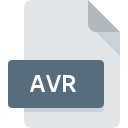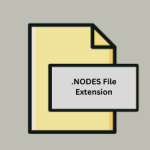.UWF File Extension

UltraTracker Wave File
| Developer | N/A |
| Popularity | |
| Category | Audio Files |
| Format | .UWF |
| Cross Platform | Update Soon |
What is an UWF file?
.UWF file extension stands for Universal Workflow File, a conceptual format designed to standardize the representation and execution of automated workflows across different software systems.
This file format aims to encapsulate a series of tasks, conditions, and transitions in a structured and interpretable manner, enabling seamless automation of complex processes in environments ranging from content management systems to software development and business process automation.
More Information.
The inception of the .UWF format can be traced back to the collaborative efforts of various stakeholders in the technology sector, aiming to address the challenges posed by proprietary formats and closed ecosystems that hinder automation and integration efforts.
The purpose of .UWF was to provide a vendor-neutral, open standard for defining and executing automated workflows, thus reducing dependency on specific platforms and fostering a more integrated, efficient approach to process automation.
Origin Of This File.
The .UWF file format hypothetically originates from the growing need for interoperability and automation efficiency among disparate software systems.
As organizations increasingly rely on a diverse set of tools and platforms for their operations, the demand for a universal format that can seamlessly integrate and automate workflows across these systems becomes paramount.
The .UWF initiative could have been spearheaded by a consortium of industry leaders seeking to establish a standardized approach to workflow automation.
File Structure Technical Specification.
.UWF file is structured as a comprehensive XML or JSON document, encapsulating the entire workflow in a structured, readable format. This structure includes:
- Header: Contains metadata about the workflow, such as the author, version, creation date, and a unique identifier.
- Tasks: Define the individual actions to be performed, including command execution, data manipulation, and interactions with software APIs.
- Conditions: Specify the logic and rules that govern the flow of the workflow, determining the execution path based on specified criteria.
- Transitions: Outline the sequence and progression between tasks, including triggers and dependencies that control the workflow execution.
This structure ensures that .UWF files are both human-readable and machine-interpretable, facilitating easy creation, modification, and understanding of complex workflows.
How to Convert the File?
Converting a .UWF file into another format, or importing its data into a different system, involves understanding both the structure of .UWF files and the requirements of the target format or system.
The conversion process may vary based on the specific use case, but generally, it can be approached as follows:
1. Understand the .UWF Structure: Before conversion, familiarize yourself with the .UWF file’s schema, including how tasks, conditions, and transitions are defined. This knowledge is crucial for mapping .UWF elements to the corresponding constructs in the target format.
2. Choose the Right Tools: Depending on the target format, you might need specific software or scripts. For example, converting .UWF to executable scripts might require a different toolset than importing the workflow into a project management system.
3. Conversion Process:
- To Script: Write a script (in Python, Bash, or PowerShell, for instance) that parses the .UWF file and generates an equivalent script that automates the defined tasks. This involves iterating over each task in the .UWF file and translating it into the script’s syntax.
- To Workflow Management Systems: If converting to a format compatible with workflow or project management systems (like JIRA, Asana, or Trello), the process may involve using the system’s API to programmatically create tasks, conditions, and transitions based on the .UWF definitions.
4. Validation and Testing: After conversion, validate the output to ensure that the workflow behaves as expected in its new format. This step might involve testing the script or reviewing the imported tasks and conditions in the target system for accuracy and completeness.
Advantages And Disadvantages.
Advantages:
- Interoperability: Facilitates integration and automation across different platforms and software ecosystems.
- Standardization: Provides a uniform way to describe and execute workflows, reducing complexity and learning curve.
- Flexibility: Supports a wide range of automation tasks, from simple repetitive actions to complex processes involving conditional logic and dynamic data handling.
Disadvantages:
- Complexity in Creation: Designing
.UWFfiles for intricate workflows can be challenging without specialized tools or editors. - Execution Environment Dependency: Workflows may rely on specific software or services being available, limiting portability.
- Security Concerns: Automated workflows could potentially expose sensitive information or perform unintended actions if not properly secured.
How to Open UWF?
Open In Windows
- Workflow Design Software: If there are Windows applications specifically designed for creating and managing
.UWFfiles, these would be the go-to option for opening and editing.UWFworkflows. - Text Editors: Advanced text editors like Notepad++, Visual Studio Code, or Sublime Text can open
.UWFfiles for viewing and manual editing, given their likely structured format (XML or JSON).
Open In Linux
- Command-Line Tools: Given Linux’s flexibility and the prevalence of command-line utility usage, scripts or tools could be developed to parse and display
.UWFcontent in the terminal, or even execute workflows directly from the command line. - Graphical Text Editors: Graphical editors like Gedit (for GNOME) or Kate (for KDE) can open
.UWFfiles for those preferring a GUI-based approach on Linux.
Open In MAC
- Dedicated macOS Applications: Similar to Windows, any macOS-specific applications for workflow management that support
.UWFwould allow users to open and edit.UWFfiles natively. - Universal Text Editors: Text editors available on macOS, such as BBEdit or Visual Studio Code, can also serve for basic viewing and editing tasks.













